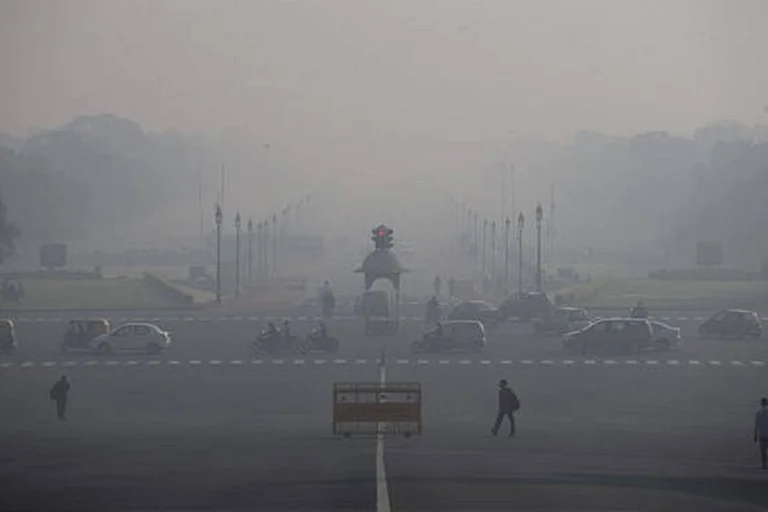“I am generally a happy-go-lucky type of person,” Dipti Mukherjee insists. But, according to the 30-year-old Calcutta homemaker, “for about three months a year I suddenly turn into a different person—depressed and withdrawn, apparently for no reason at all. I sulk and even shun gatherings. When there are parties in our house, I often lock myself in my room and refuse to come out and meet the guests.” After her arranged marriage to a Bengal-based businessman two years ago, her husband and in-laws concluded that she had a multiple personality disorder which was kept hidden from them. “I was so insulted by their allegations that I was on the verge of asking for a divorce, when my husband suggested I consult a psychiatrist. That’s when I was diagnosed as suffering from ‘seasonal affective disorder’ or SAD,” a psychological disorder which shows symptoms during certain months of the year, remaining dormant at other times.
“SAD is an extremely serious but underdiagnosed condition with symptoms which are often dismissed as ‘mood swings’ or even ‘personality disorders’,” says psychiatrist Debashish Ray. “But it is a psychological disease which is triggered by external and environmental causes, most generally the onset of the cold, winter months or other intemperate or inclement weather conditions,” he specifies. Dr Ray further explains that according to statistics, more women are afflicted with the condition (the reason is yet unknown), which is characterised by a host of symptoms, the most common being lethargy, increased sleep and appetite and a lack of interest towards daily activities like domestic chores, physical exercise or even mental work. “The patient may experience a deep feeling of rejection and alienation from society,” explains Dr Ray. In extreme cases, this deep sense of loneliness can, according to experts, be accompanied by suicidal thoughts.
Take Gloria D’souza. The 50-year-old claims to have lived her entire life battling thoughts of ‘self-harm’ until finally last year, a colleague referred her to a psychiatrist. “Come winter, when the rest of my family would be delighted at the thought of the approaching Christmas festive season, I would be dreading meeting relatives,” says the receptionist of a private firm. “Each year, from November to January, I buried myself in reading the Bible for enlightening thoughts and that is what kept me going. But the depression was never completely gone until summer, when miraculously I would start to feel better again.”
The first time that a diagnosis of this condition—earlier commonly termed the ‘winter blues’—received a formal name was in 1984, when Dr Norman Rosenthal and his colleagues at the National Institute of Mental Health in Bethesda, Maryland, US, used the term (Seasonal Affective Disorder) in a research paper.
Since then, SAD has not only become widely accepted as a psychological disease that merits the whole gamut of medical attention, from diagnosis to treatment, psychologists, doctors and other medical professionals also warn against ignoring symptoms, as it’s potentially dangerous both in the long and short terms. “Other than thoughts of self-harm, the most important reason to seek treatment, the disease, also known as ‘winter depression’, can make a person dysfunctional,” says Dr Ray.
D’souza recalls that she became so averse to work that she quit several jobs during winter months, when her symptoms peaked. “It was crazy. I didn’t feel like getting out of bed. While in college, my parents thought I was just lazy and forced me to get up. But when I started working I was on my own. Dragging myself out of the blankets was a big chore. I saved money throughout the year so that I could go into hibernation in the winter,” she jokes, saying that she changed her job at least a dozen times in thirty years.
According to Sanjay Garg, senior consultant psychiatrist, Fortis Hospitals, Calcutta, “Though the exact causes of SAD remain unknown, the lack of sunlight during winter has a role to play.” He observes that changes in melatonin absorption by the body influences sleep patterns, triggering mood changes. “Serotonin levels too decrease due to less sunlight and may produce these symptoms,” he adds. “Changes in the circadian rhythm (the 24-hour physilogical cycle) may also be a contributory factor.” A prior family history of the disorder is also associated with its onset.
What of treatment? Dr Garg emphasises the need for taking preventive measures by those who have observed significant changes in behavioural patterns in themselves or others. “The golden principle always is prevention is better than cure. If you have noticed this happening regularly, be prepared. Keep your house bright and airy. Open windows and blinds. Take regular walks in the sun. Try and have your lunch in the open—or at least sitting by the window of your home or office. Exercise regularly. Do yoga. Meditate. Observe a balanced diet with plenty of fruits and vegetables. If these things do not help or if your condition affects your day-to-day functioning, then you may need to see a professional. Phototherapy with special light boxes, psychotherapy or sometimes medication does provide relief,” he suggests.
Dr Ray too believes that the importance of treatment cannot be overemphasised. He points out that patients tend to ignore symptoms and not seek treatment because there is a kind of age-old, tacitly-agreed social stigma attached to anything loosely considered a ‘mental illness’. But those who have been treated for SAD—Dr Ray puts the figure of patients with winter depression to as high as 30 per cent of his daily visitors during November, December and January—have discovered that they could live a much fuller life during the cold season with just a simple treatment of light—natural as well as artificial.
Dipti Mukherjee and Gloria D’souza have both benefited from light treatment and claim that not only are their winters more satisfactory since then, but that their lives in general also seem to have been lit up from within.
***
FAQ About SAD
What is Seasonal Affective Disorder?
A depression which afflicts suffers in particular times of the year, usually winter
What are the symptoms?
Severe lethargy; increased need for sleep; increased craving for food; sudden drop in energy levels; constant feelings of irritability; sense of rejection, alienation, loneliness; heaviness of the lower legs and arms
What are the causes?
Mostly unknown, though it has been linked to lack of adequate sunlight; lower levels of melanin production and lower levels of serotonin; family history and heredity are factors
Treatment:
Prevention includes healthy diet, yoga, meditation, exercise; treatment is specifically psychiatric and involves various types of phototherapy
When should you be worried?
If you regularly experience significant shifts in moods, behaviour and personality during particular periods of the year it could be cause for concern


























